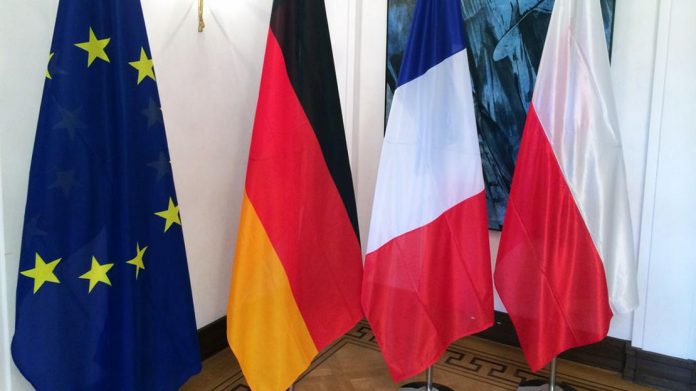At the EU Foreign Affairs Council meeting on April 22, NGOs, think tanks and businesses argued that a “Green Weimar Triangle” of France, Germany and Poland could guarantee the EU’s climate goals and address critical economic competitiveness and cohesion issues, according to Euractiv.
The stated aim of the Weimar Triangle is to promote co-operation on cross-border and common European challenges and to strengthen European unity. In their latest joint declaration on February 12, the three governments focus primarily on defence. However, the Triangle has overlooked equally pressing issues, such as the implementation of the EU’s signature project, the European Green Deal (EGD).
Germany, France and Poland together represent 40% of the EU’s population and are responsible for 47% of the EU’s greenhouse gas emissions. Their energy policies and visions of transition are often at odds with each other. Poland relies heavily on coal, France continues to prioritise nuclear power, and Germany has suddenly abandoned the previously dominant cheap Russian gas.
A recent poll conducted by the Jacques Delors Centre reveals strong democratic support for climate action in all the countries of the Weimar Triangle. Most voters in Germany, France and Poland want ambitious action on climate change, with stronger green industrial and investment policies and a focus on a socially just transition.
In an open letter published by various environmental organisations, think tanks, academic institutions and businesses from the three countries call for the creation of a “Green Weimar Triangle” to ensure continued exchange and co-operation on climate and energy issues. The authors urge their governments to ensure that the EU’s energy transition continues to move forward and to eliminate the EU’s dependence on fossil fuels as soon as possible.
Beyond energy co-operation, the Weimar Triangle can also signal Europe’s unity in the fight against climate change by prioritising additional co-operation on industrial decarbonisation, climate investment, and a just and socially equitable transition.
Germany, France and Poland hold a key position in shaping the EU’s industrial landscape, being collectively responsible for 43% of EU industrial production. Germany and France have already adopted measures to support net zero transition industries, such Carbon Contracts for Difference and subsidies that favour electric vehicle manufacturers in the EU.
Together, the members of the Weimar Triangle could stimulate decarbonisation of industry at EU level with benefits for the single market as a whole, thereby reducing the risks of a subsidy war.
Closing the climate investment gap in Europe will be an important step. The French think tank I4CE recently estimated the investment gap to 2030 at €406 billion per year.
As EU countries prepare to implement the new Emissions Trading System for road transport and buildings (ETS-2), proactivity will be crucial to support decarbonisation among vulnerable households.
Germany, France and Poland should set an example by accessing 37% of SCF funds, as well as providing substantial co-financing and developing social climate plans that effectively address vulnerabilities in the transport and building sectors, experts argue.
With a new EU institutional cycle approaching and Poland’s EU Presidency looming, now is the most opportune time for Green Weimar Triangle to act.
